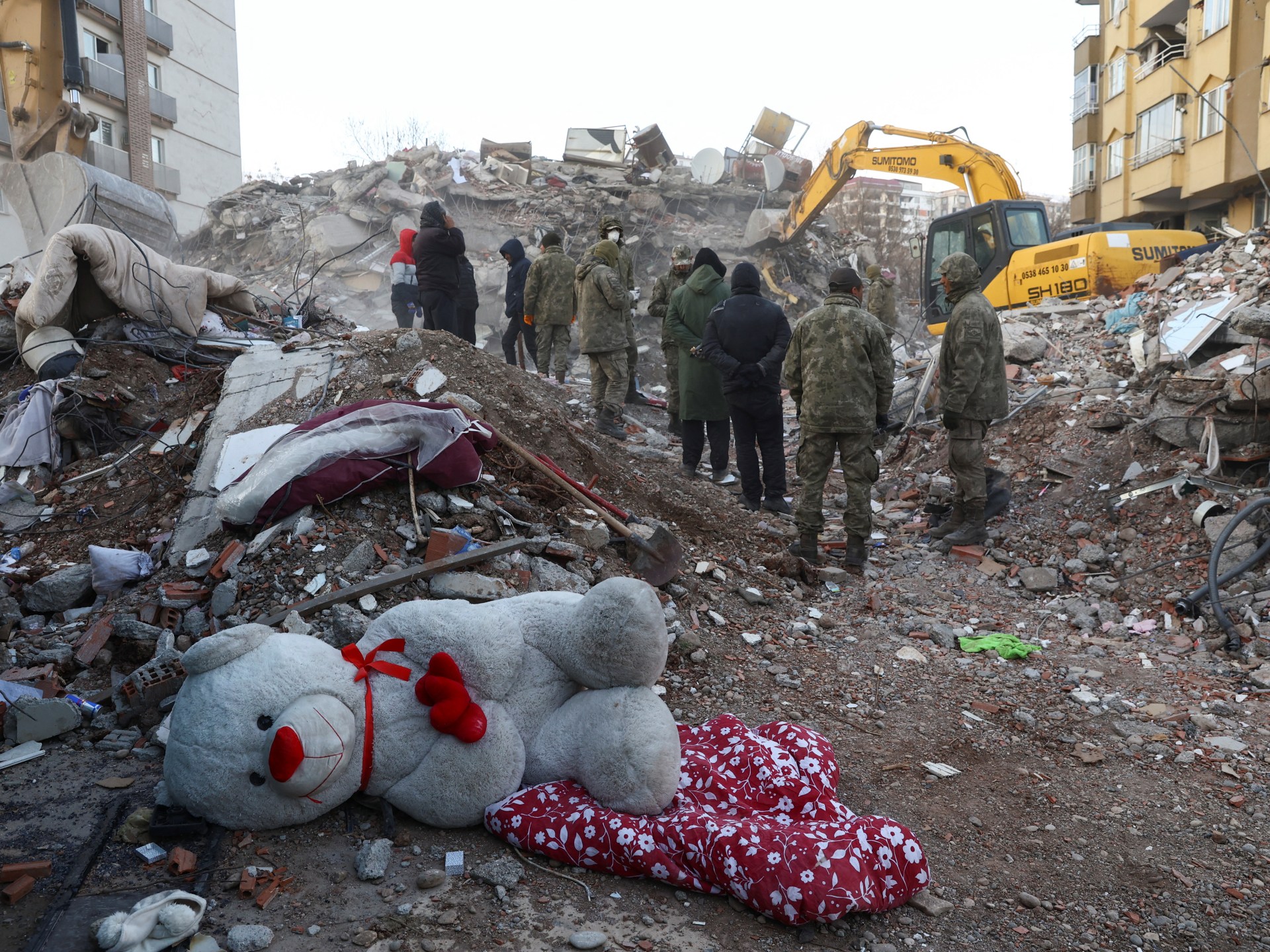Kahramanmaraş -
Scenes of destruction increase as you approach the entrance of the city of Kahramanmaraş, which was the epicenter of the devastating earthquake that hit Syria and Turkey last Monday. Cars swallowed up by potholes from the impact of the earthquake. A place, and the columns of smoke can be noticed from afar, and the smell of death spreads in every corner of the city and the roads to it.
On the roads leading to Kahramanmaraş (southern Turkey), vehicles flock to enter the city on the sixth day of the disaster, some carrying aid and others carrying digging machines, while others came to the city in search of their loved ones. On the other hand, most of the vehicles leaving from Marash are security vehicles and others for ambulance.
Once near the Turkish city limits, vehicles are forced to slow down, as warning barriers have been placed around the edges of the streets, which have been destroyed and become unusable.
Even 6 days after the devastating earthquake, there is still hope to rescue more victims trapped among the rubble of destroyed buildings. Yesterday, Friday, a team of volunteer miners managed to rescue a child and her mother from the wreckage of a destroyed building on Trabzon Street in Marash.
Pictures from the great tragedy of Maraşlı.
With the continuation of rescue and relief operations for the earthquake victims in Kahramanmaraş, the roads are crowded with vehicles entering the city, some of whose owners came either to see what happened to their homes, to check on their families, or to search for them in the city's hospitals.
Among them, the young Syrian citizen Bilal al-Omar, a resident of Marash, told Al-Jazeera Net, "Entry to the city is limited to specialized groups that have experience in the fields of rescue and relief in order to control the state of chaos, and before that everyone was allowed to enter."
"Usually there is no such congestion at the entrance to the city. You may not find two or three cars because it is a main road, but during the past two days the road witnessed a huge congestion," he added.
It is clear from the pictures the condition of the open roads to the city of Marash, and the huge number of vehicles whose owners intend to enter the city.
The shock is not over yet.
The first moments of the earthquake were not understood by all the residents of the affected areas, as they rushed outside carrying their children without understanding what had happened.
Trauma still haunts the features of the earthquake survivors in Maraş, while mobile phones are what they use most to check on their families and to coordinate their needs, at a time when new deaths are heard every hour.
Among those we met, Muhannad al-Ahmad, a resident of the city of Kayseri (central Turkey), told Al-Jazeera Net, "When the first earthquake occurred, we felt its strength in Kayseri, and we rushed out to a square in front of my house. Hundreds of civilians, children, women, and the elderly gathered."
He added, "I did not think at first about what happened to my relatives and my family in other cities, but after the situation calmed down, and I saw what was happening through breaking news, I rushed in my car to transport my cousin and his wife from the city of Marash."
The young man describes the trip by saying, "I have never driven my car in the streets connecting Maraş and Kayseri with such crowds before. The tension was at its highest for me until I reached the city and met them. Now they are in Kayseri, closely following up today what is happening there and the news of those who survived and those who died." their knowledge.”
It is worth noting that many of the victims' families were able to find their bodies and were taken to the cemeteries with the intention of burying them. Eyewitnesses told Al-Jazeera Net correspondent, "It can be seen that people crowded in the cemeteries, as they came to bury their families in mass graves, while the evidence bore numbers for the victims due to their large numbers."

